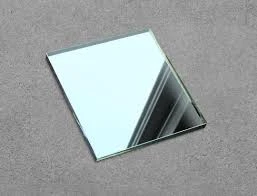

The Advantages of Low-E Reflective Glass
Low-E reflective glass, or low-emissivity glass, is a technologically advanced material that has rapidly gained popularity in the construction and design industries. This type of glass is coated with a thin layer of metallic oxide that serves to reflect radiant energy. By minimizing the amount of thermal energy that enters or escapes from a building, Low-E glass offers several significant advantages that make it an ideal choice for modern architecture.
The Advantages of Low-E Reflective Glass
Furthermore, Low-E glass enhances the comfort of indoor spaces. The ability to control heat gain and loss leads to a more stable indoor climate. Occupants can enjoy pleasant temperatures without the discomfort of drafts or excessive heat. Additionally, the glass minimizes glare caused by sunlight, making it easier to work or relax in naturally lit environments without the need for heavy drapes or blinds. This enhancement of comfort is particularly valuable in large commercial spaces or residential homes with extensive window installations.

Another significant advantage is the reduction of harmful UV radiation. Low-E glass is designed to block a substantial portion of UV rays while still permitting visible light to enter. UV rays are known to contribute to fading and damage of interior furnishings, artwork, and flooring. By using Low-E glass, homeowners and businesses can protect their investments and maintain the aesthetics of their spaces for longer periods. This protective quality also benefits occupants’ health, as reduced UV exposure lowers the risk of skin damage associated with prolonged sun exposure indoors.
Moreover, the aesthetic appeal of Low-E reflective glass cannot be overlooked. It is available in various styles and finishes, allowing architects and designers to integrate it seamlessly into various building designs. Whether it’s sleek commercial skyscrapers or contemporary residential homes, Low-E glass provides a modern look that enhances the overall architectural vision.
Lastly, the longevity and durability of Low-E reflective glass contribute to its growing popularity. The coating applied to the glass is designed to withstand the elements while maintaining its efficiency over time. This durability ensures that buildings remain energy-efficient and visually appealing for years to come, providing substantial return on investment.
In conclusion, Low-E reflective glass represents a revolution in building materials, offering energy efficiency, comfort, UV protection, aesthetic versatility, and durability. As more architects and builders recognize its advantages, the likelihood of its adoption in both residential and commercial construction will continue to rise, paving the way for a more sustainable future in architecture.